Rise in temperature will continue largely unabated
Humanity is still heading unchecked toward a world that is 3 degrees warmer. What will it look like for us and our children? How can we still prevent it? Renowned climate scientist Prof. Stefan Rahmstorf explains this in a short lecture on the book “3 Degrees More” at the Helmholtz Center in Leipzig.
Where do we stand?
From the Ice Age into the Holocene—the current epoch of Earth’s history—the planet warmed by six to seven degrees, causing about two-thirds of the ice to melt and the sea level to rise by 120 meters. This means that we still have one-third of the Ice Age ice mass remaining, which, if it melts, would raise sea levels by more than 65 meters.
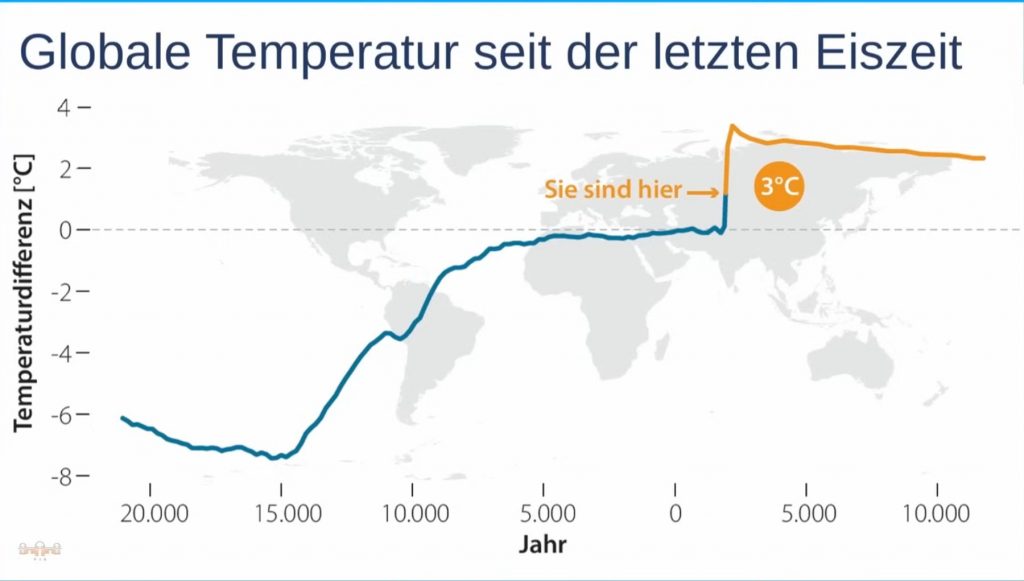
Where do we stand in temperatur rise: From the ice age to the holocene
The “Warming Stripes” make it clear. Each stripe represents the temperature of a single year. The stripes begin in 1880 and continue to the present, showing a global warming of 1.2 degrees.
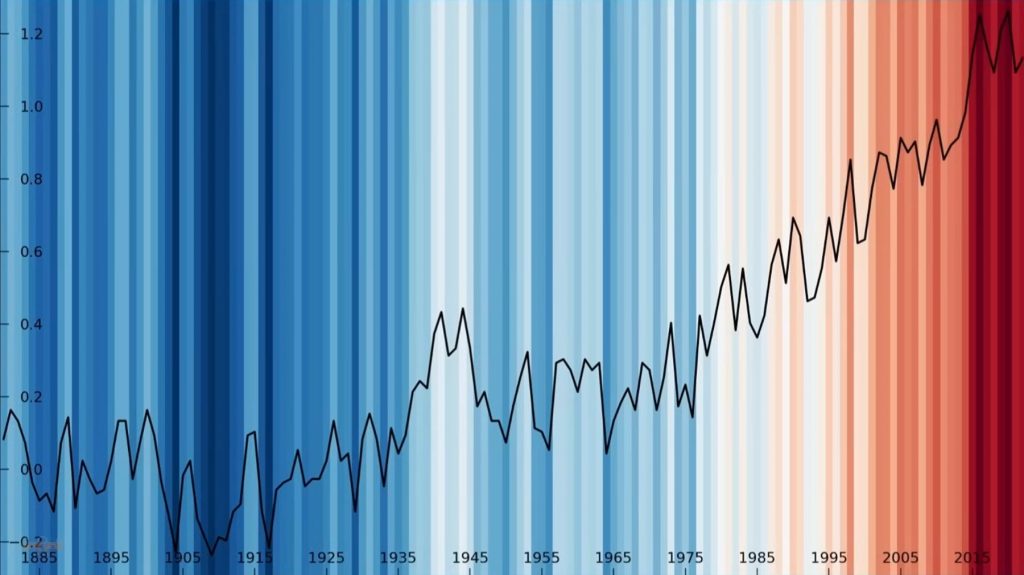
In Germany, temperature rise has already reached 2.3 degrees of warming—about twice as high as the global average of 1.2 degrees. This was expected and predicted. It is also not surprising, because 70% of the Earth’s surface is covered by oceans, which warm more slowly and less overall due to their thermal inertia and the cooling effect of evaporation.
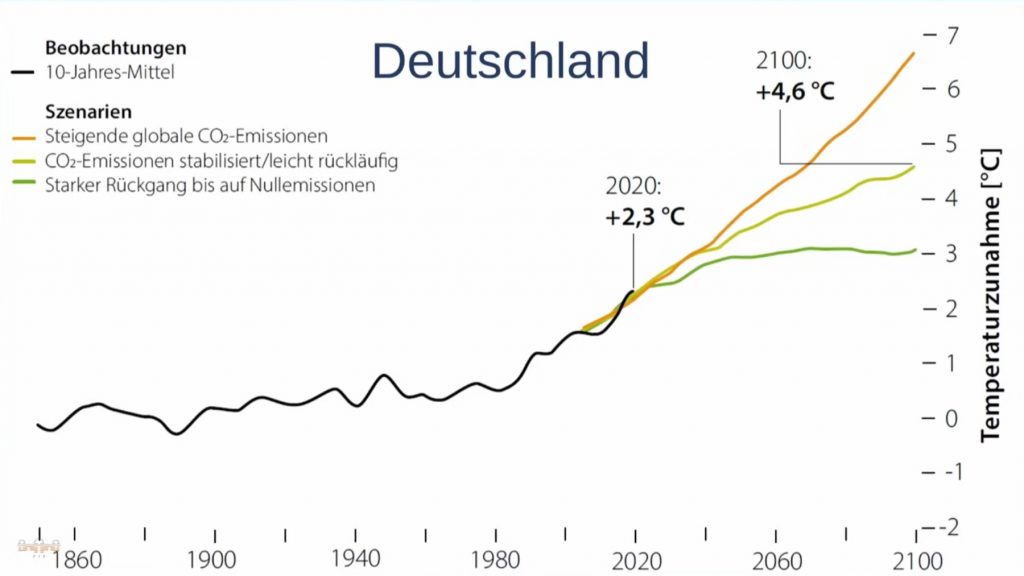
This also means that a global 3-degree scenario would result in somewhere between 5 and 6 degrees of warming in Germany, because, for the reasons mentioned, we can expect roughly double the global increase.
In such a scenario, we would certainly no longer recognize our country or the world as a whole. The consequences would be catastrophic.
An uncomfortable truth
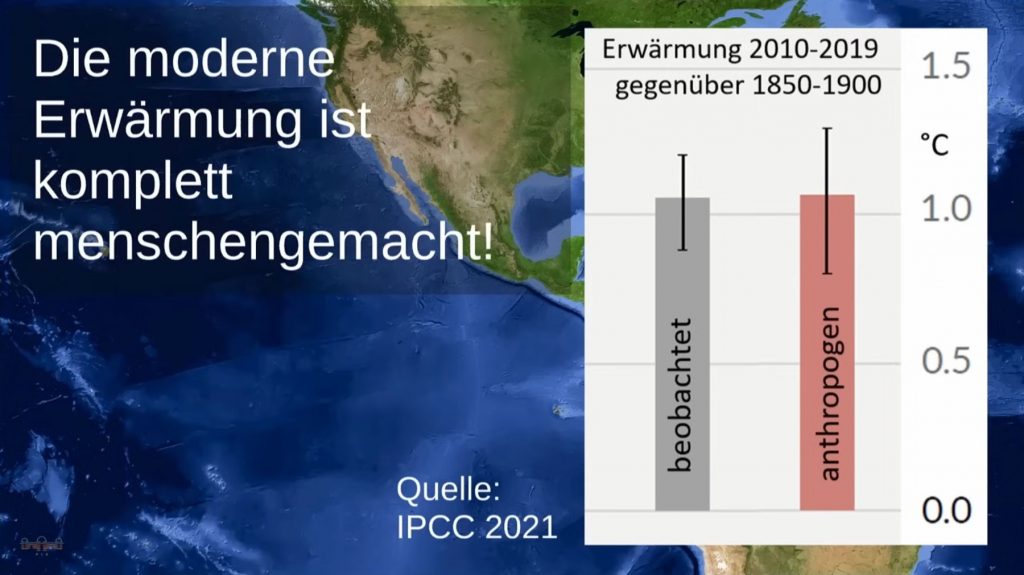
To be clear, 100% of the measurable global warming we are experiencing is caused by humans. There is no natural contribution to this change. This reality may be uncomfortable, but it also presents a great opportunity: we do not need to change anything that we cannot change in order to counteract temperature rise. Everything that has caused 3 degrees warming has been caused by humans and can therefore also be altered by us. This should serve as both motivation and hope.
If humanity fails, it will be entirely due to our own actions—and not because of an unknown force, a deity, or a natural event beyond our control.
Every municipality can also make an effective contribution to climate protection.
Whether through sustainable mobility, energy-efficient renovation, or citizen participation—the scope for action is large. Concrete ideas for municipal climate protection can be found in our article: Ideas for Municipal Climate Protection.
The extremes are increasing
In April of this year, the temperature record in Córdoba, Spain, was exceeded by nearly 5 degrees. Unfortunately, such extreme new record values have become increasingly frequent in recent years in various parts of the planet.
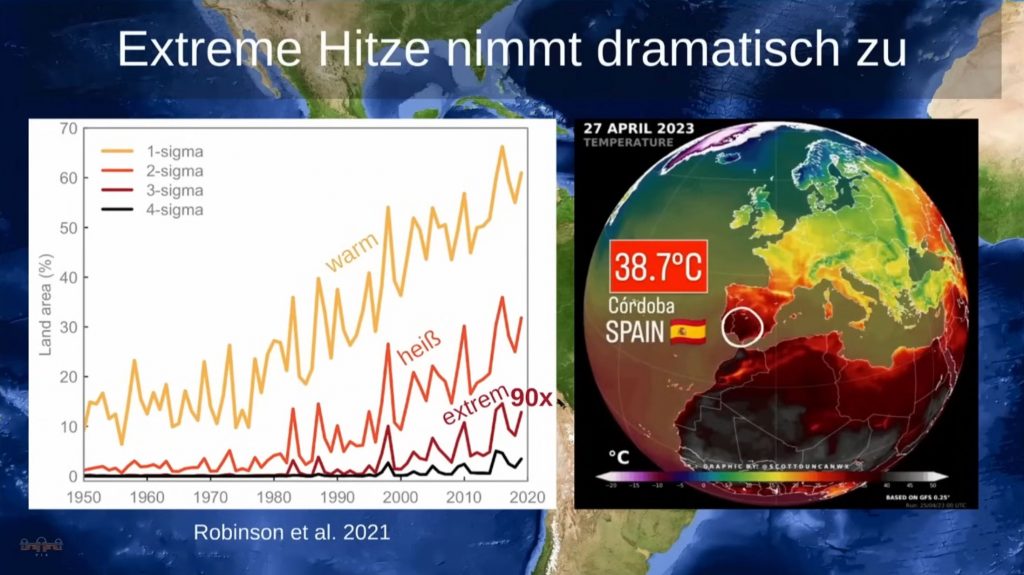
The graphic on the left shows the frequency of heat anomalies by intensity levels from 1 to 4, based on monthly temperature data. The dark red line represents a change that was almost non-existent before the onset of global warming during the reference period from 1950 to 1980 — and that now occurs 90 times more frequently. Heatwaves of this magnitude, which have caused tens of thousands of deaths across Europe, would almost certainly not exist without global warming.
With further warming, some regions of the Earth will simply become too hot for human life to be sustainable. This conclusion is supported by a study published in the Proceedings of the National Academy of Sciences (PNAS).
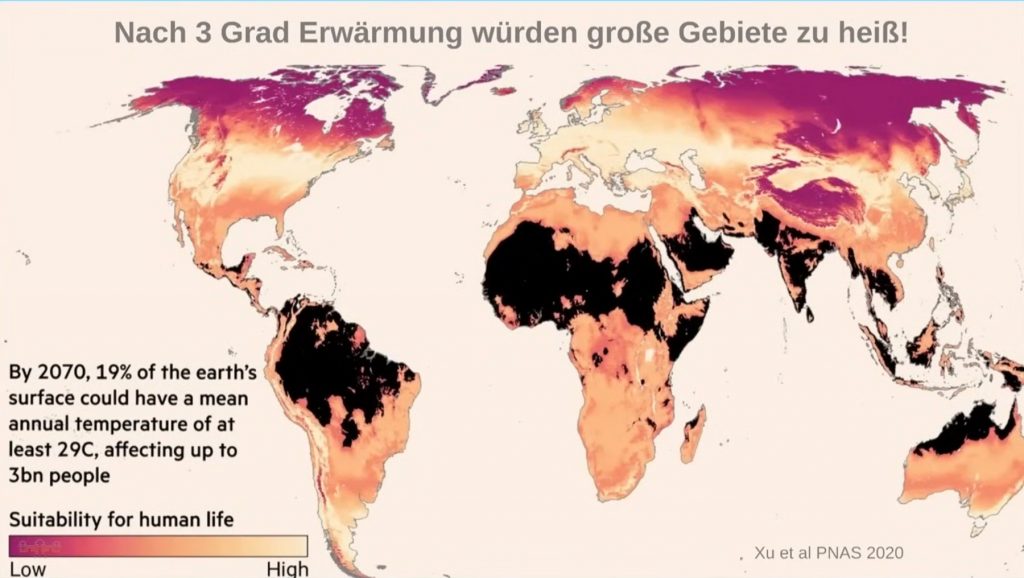
The areas shown in black are simply so hot that people will not be able to stay outdoors for extended periods, such as several weeks. Life for humans in these regions will likely no longer be possible. Many of the people living there will have to leave and find a new place to live. It is difficult to estimate how many people will be affected, but it will be a large number, especially when looking at the black areas in regions such as India. This will trigger or intensify a variety of conflicts, struggles over resources, and violent confrontations.
Drought and flood: two sides of the same coin
Another extreme consequence of warming is the increasing drought. In Europe, the Mediterranean region will dry out. This is already happening, as measurement data show and models have long predicted.
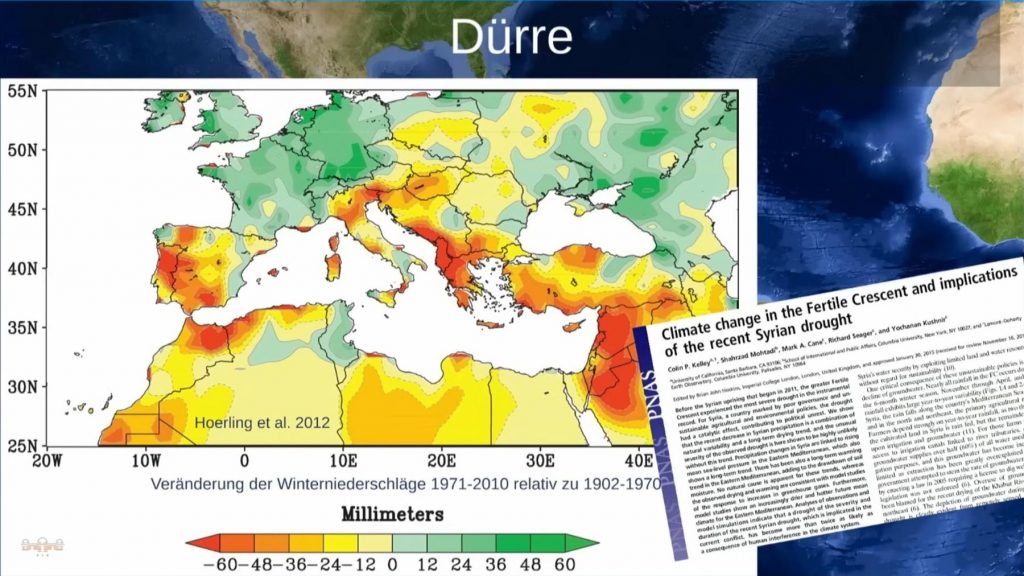
We can clearly see a decrease in rainfall in the Mediterranean region. The increasing evaporation due to warming further leads to the drying out of vegetation and soils. It is also evident that areas like Syria are severely affected by this drying. In Syria, before the outbreak of the civil war, people experienced the worst drought in at least 900 years, which resulted in 1.5 million internally displaced persons.
The flip side of drought is that extreme rainfall events are increasing. Warm air can hold more water vapor, which can then fall as heavy rain under the right weather conditions. The data clearly show that we have moved beyond the range of random heavy rainfall, and extreme precipitation has now increased statistically significantly. These are the types of events that led to the flood disaster in the Ahr Valley.
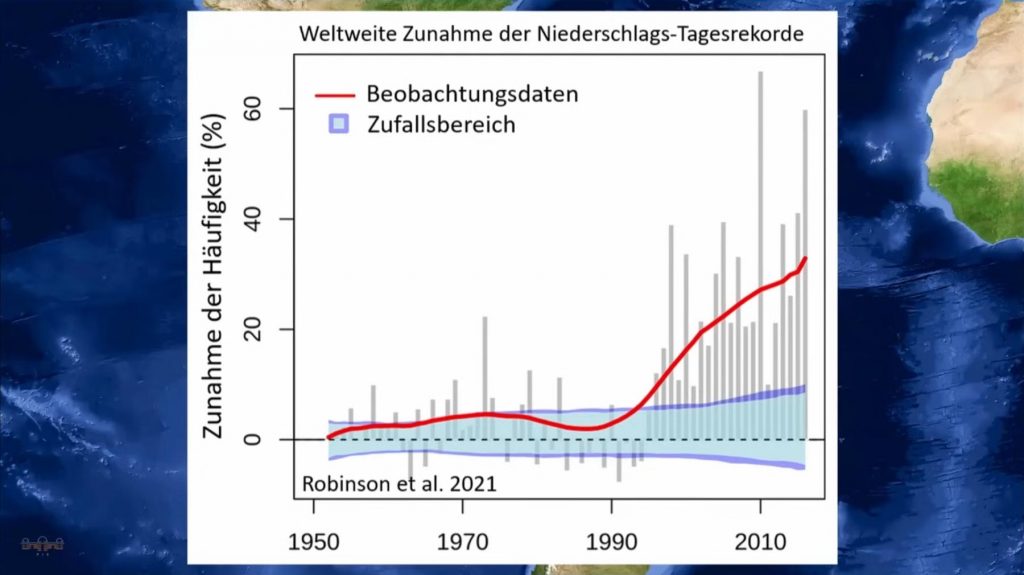
Swiss scientists demonstrated in a study conducted the year before the Ahr Valley flood that extreme rainfall events will increase significantly in Germany, Austria, Switzerland, and the Netherlands, likely even more than the global average.
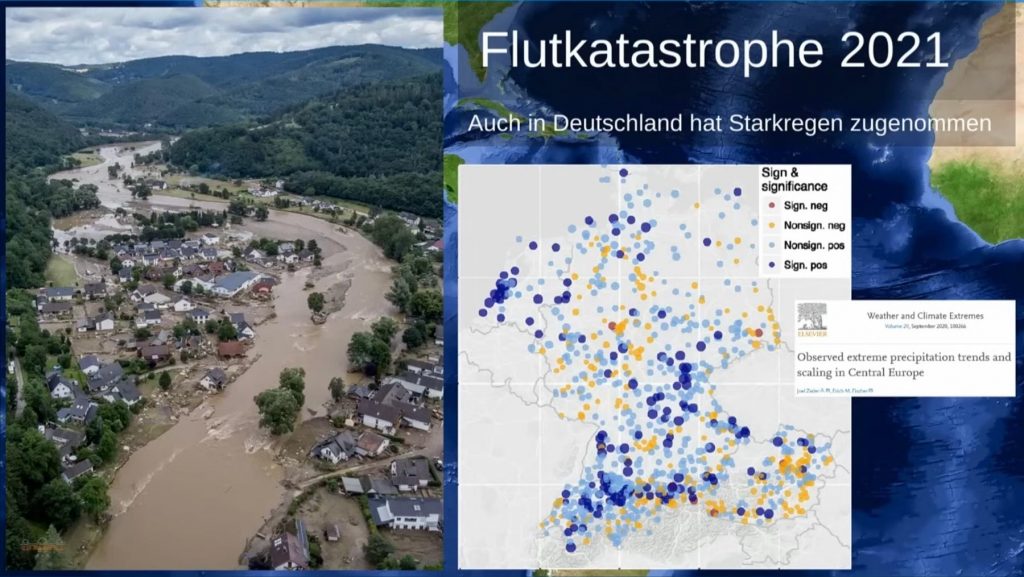
Motorized private transport not only contributes significantly to global warming but also exacerbates extreme weather events such as heavy rainfall. Less car traffic means lower CO2 emissions, better air quality, and reduced urban heat – an important step in reducing flood risks.
To learn how car-free city centers can contribute to climate adaptation, read our article.
The rise of sea levels
When water is heated, it expands, and when ice is heated, it melts. Both of these processes cause sea levels to rise.
Meanwhile, satellite data show that the rate of sea level rise is even accelerating, which makes sense. The warmer the air and the oceans become, the faster the continental ice masses melt, and the faster sea levels rise.
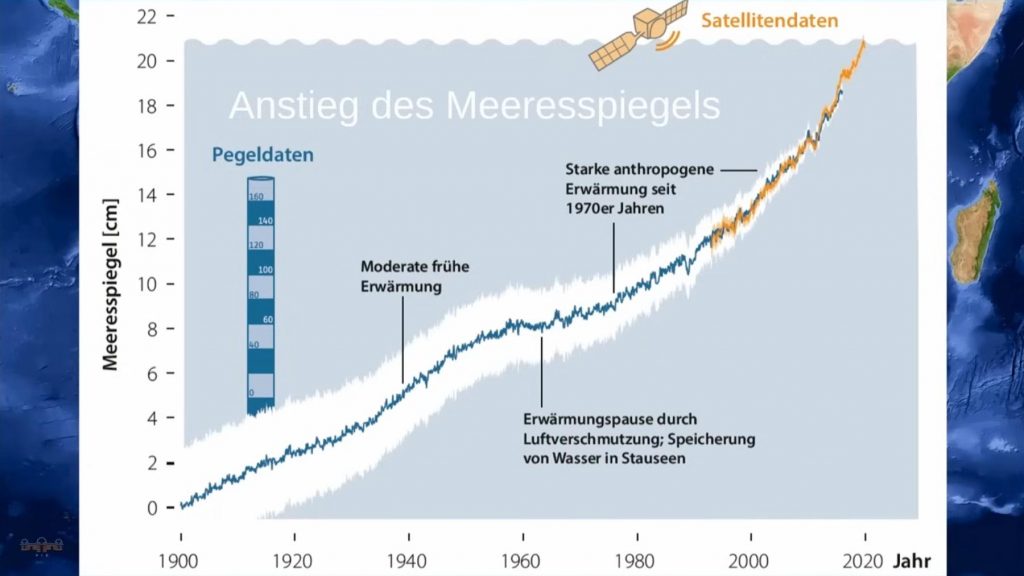
Irreversible events are increasing
Another problem is the so-called tipping points in the climate system, some of which are shown here. A tipping point is the point at which the further development of a system becomes self-sustaining, without needing any additional push. A glass that I slide toward the edge of a table will eventually fall to the floor, even before I have completely pushed it over the edge. In relation to tipping points in the climate system, this means that processes can no longer be stopped and will continue on their own without any further external intervention.
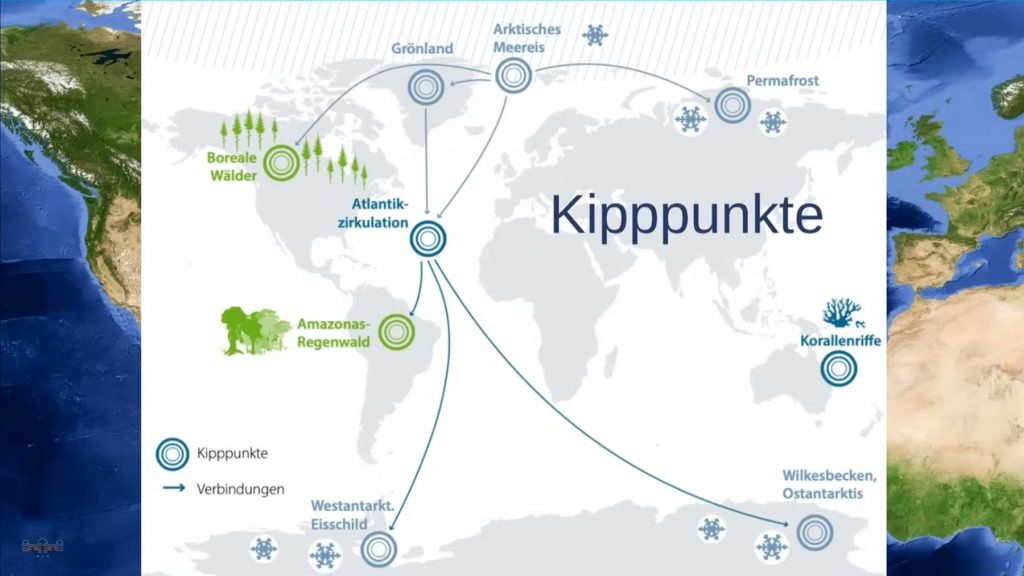
The continental ice masses in Greenland and Antarctica have tipping points, beyond which the total loss of ice will become unstoppable. But biological systems also have such tipping points. We see ecosystem collapses, for example, in freshwater ecology, when a lake “turns over” in the summer, or in forests that dry out and die, eventually catching fire, since the risk of wildfires also increases with severe drought.
Coral reefs have likely already passed their tipping points in large parts of the world. Three-quarters of the Great Barrier Reef in Australia has already bleached because the water has become too warm for the corals.
The risk of crossing tipping points rises from moderate to high with a temperature increase from 1.5 to 2.5 degrees Celsius. Even a risk classified as moderate is already too dangerous, posing unpredictable changes and threats for future generations. Exceeding the 1.5-degree threshold will only increase these dangers and their consequences.
Do you have questions about 3 degrees warming? Feel free to contact us!
Let’s work together to raise awareness about climate protection among the citizens of your community through Klima-Taler gamification.

Markus Schulz
With the Klima-Taler app, getting started with data-driven, climate-friendly, and citizen-oriented mobility planning is easy, safe, and effective.

